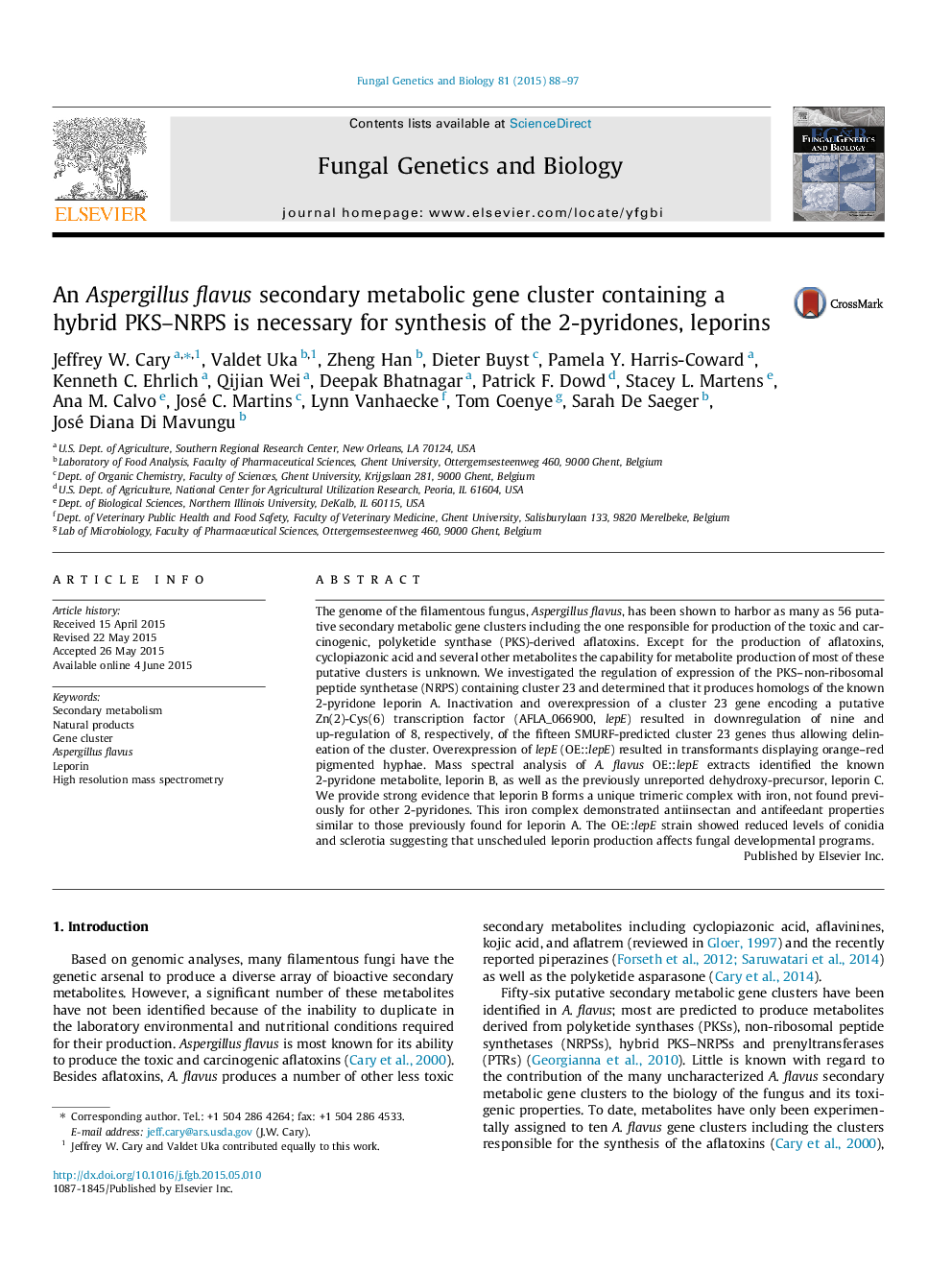| Article ID | Journal | Published Year | Pages | File Type |
|---|---|---|---|---|
| 8470670 | Fungal Genetics and Biology | 2015 | 10 Pages |
Abstract
The genome of the filamentous fungus, Aspergillus flavus, has been shown to harbor as many as 56 putative secondary metabolic gene clusters including the one responsible for production of the toxic and carcinogenic, polyketide synthase (PKS)-derived aflatoxins. Except for the production of aflatoxins, cyclopiazonic acid and several other metabolites the capability for metabolite production of most of these putative clusters is unknown. We investigated the regulation of expression of the PKS-non-ribosomal peptide synthetase (NRPS) containing cluster 23 and determined that it produces homologs of the known 2-pyridone leporin A. Inactivation and overexpression of a cluster 23 gene encoding a putative Zn(2)-Cys(6) transcription factor (AFLA_066900, lepE) resulted in downregulation of nine and up-regulation of 8, respectively, of the fifteen SMURF-predicted cluster 23 genes thus allowing delineation of the cluster. Overexpression of lepE (OE::lepE) resulted in transformants displaying orange-red pigmented hyphae. Mass spectral analysis of A. flavus OE::lepE extracts identified the known 2-pyridone metabolite, leporin B, as well as the previously unreported dehydroxy-precursor, leporin C. We provide strong evidence that leporin B forms a unique trimeric complex with iron, not found previously for other 2-pyridones. This iron complex demonstrated antiinsectan and antifeedant properties similar to those previously found for leporin A. The OE::lepE strain showed reduced levels of conidia and sclerotia suggesting that unscheduled leporin production affects fungal developmental programs.
Keywords
Related Topics
Life Sciences
Biochemistry, Genetics and Molecular Biology
Cell Biology
Authors
Jeffrey W. Cary, Valdet Uka, Zheng Han, Dieter Buyst, Pamela Y. Harris-Coward, Kenneth C. Ehrlich, Qijian Wei, Deepak Bhatnagar, Patrick F. Dowd, Stacey L. Martens, Ana M. Calvo, José C. Martins, Lynn Vanhaecke, Tom Coenye, Sarah De Saeger,
